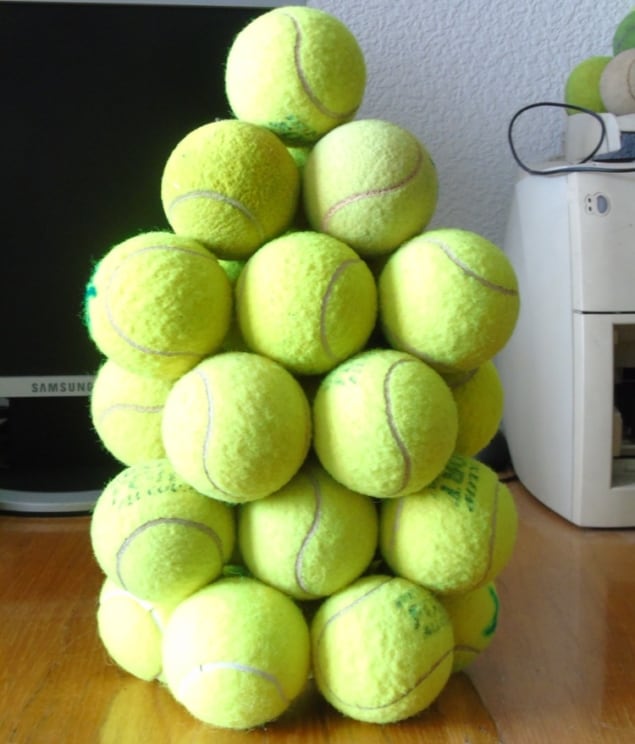
The amazing tennis ball towers made by Andria Rogava have been a surprise hit with Physics World readers. Now, the Georgian physicist has unveiled a brand-new tower design that has 30 balls in a 7-6-7-6-3-1 configuration that is six levels high (pictured above). Rogava’s towers are freestanding and held together by friction and gravity – no glue is involved.
In 1951 while working at the University of Cambridge, physicist June Broomhead published an important paper describing how she had used X-ray crystallography to work out the structures of adenine and guanine – nucleobases that contribute to the structure of DNA. This result was studied in detail by James Watson and Francis Crick, who relied on Broomhead’s insights when they famously solved the structure of DNA.
Watson and Crick shared a Nobel prize (with Maurice Wilkins) for their efforts. Broomhead married and emigrated to Canada – where as June Lindsey, she worked at the National Research Council for a few years in the early 1950s before quitting science to become a stay-at-home mother of two children.
Now at the age of 97, Lindsey’s contribution to one of the most important scientific discoveries ever is being celebrated by younger generations of Canadian scientists. You can read more in this article on the CBC website, where there is also an audio interview with Lindsey.
Symmetry, which is published jointly by Fermilab and SLAC, has been running an occasional series on common words that take on different meanings when used by physicists. The latest instalment looks at “uncertainty”, “signal”, “damping” and more.



